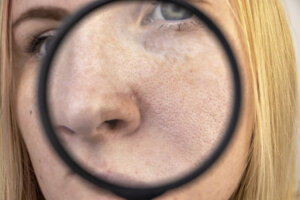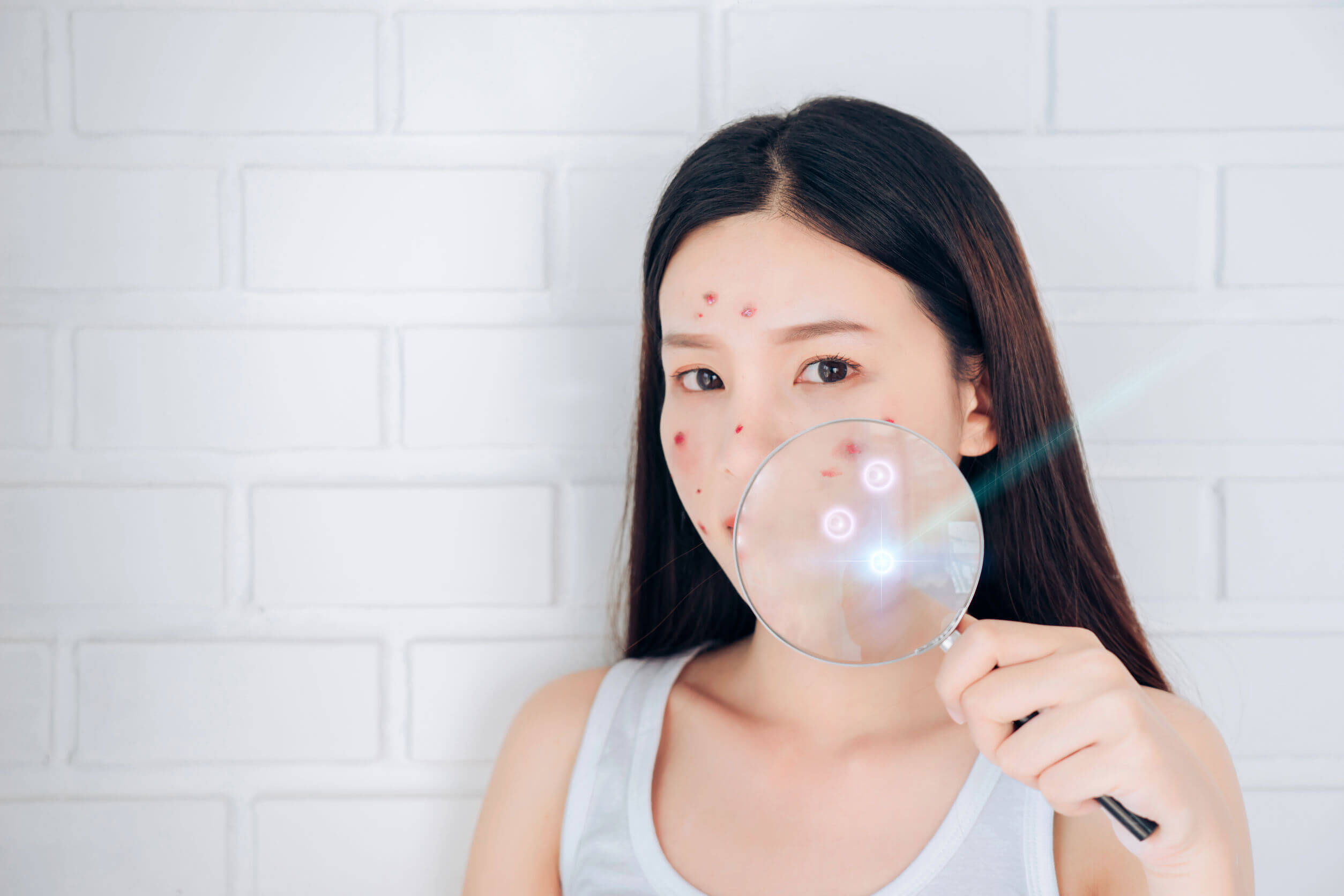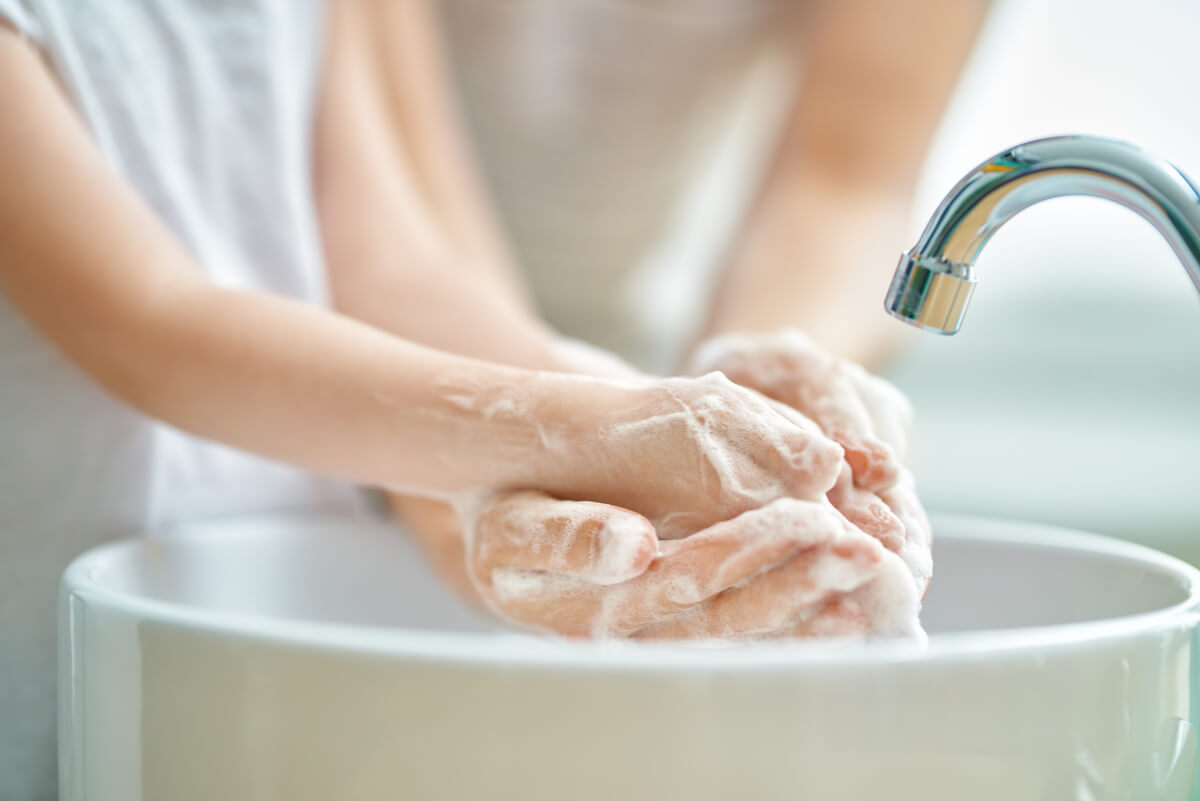How to Remove Blackheads or Open Comedones

While it’s true that not everyone is equally concerned about the blemishes or lesions caused by acne, the truth is that most people don’t find them aesthetically pleasing. Because of this, it’s common for people to look for ways to remove blackheads or open comedones.
Open comedones (commonly known as blackheads) are one of the most common forms of skin blemishes. They tend to appear more frequently in the T-zone of the face, although they can also affect other areas of the upper body.
When it comes to removing blackheads, many people don’t know what they should and shouldn’t do. For this reason, they fall into inappropriate manipulation techniques and don’t get the results they want.
What do we know about blackheads?

Blackheads, or open comedones, are not a consequence of a lack of facial cleansing. However, excessive cleaning, the use of products that are unsuitable for your skin type, constant rubbing and excessive exposure to the sun can make them considerably worse.
Regarding its causes, Mayo Clinic experts explain that “a blackhead may look like dirt embedded in the pores. But, in reality, the pore is full of bacteria and oily matter, which darkens when exposed to air.”
Blackheads are non-inflammatory acne lesions that can be removed with proper dermatological treatment.
What are blackhead extractions?
Blackhead extraction is a dermatological procedure in which whatever is causing the clogging of the pore is carefully removed. This is a mixture of sebum, dead cells, and bacteria.
The goal is to push this material up and out little by little to release the pore and improve the appearance of the skin, but without damaging it.
How are extractions performed?
To perform the extraction effectively, the following steps are followed:
- Lightly moisten the skin with warm water (or hot to a bearable temperature), as this helps to soften the blackhead and expand the pore opening. To do this, an instrument called a vaporizer is used.
- Some beauticians, prior to this, perform a gentle exfoliation of the skin. However, this isn’t a mandatory procedure. Also, not all skin will benefit from an exfoliation before starting to remove blackheads.
- Next, the dermatologist or esthetician wraps their fingers in a piece of cotton or fine tissue (such as gauze) and begins to gently push the blackhead up and out to remove it.
- There’s an instrument called a comedone extractor for these types of procedures.
Extractions and skin damage
Removing blackheads from the skin (on the face or other areas of the body) is a procedure that must be carried out with care and patience. If the blackhead doesn’t budge after a couple of tries, you can put the vaporizer back on it for a few minutes to try to soften the pore and remove it more easily.
- Although it’s tempting to insist and insist until you get the plug to come out, this isn’t the most appropriate way. Pushing too hard and using too much force can damage the skin and even cause scarring.
- If a comedone extractor is to be used, it must be carried out with care, as excessive pressure can easily injure the skin.
- Going to a dermatologist or a beauty center authorized by the professional is more beneficial than trying to remove blackheads at home. Especially if they’re numerous and spread over various parts of the face and torso.
How to perform a good extraction at home

If you want to remove blackheads at home, we recommend you take the following into account:
- Wash your hands before handling the area
- Fill a large pot with water and bring it to a boil
- Place a (body) towel and a piece of sterile cotton or gauze on your hand
- Once the water has reached its boiling point, turn off the heat
- Place a towel over your head and carefully approach the pot – keep a safe distance so as not to burn the skin
- Wait a few minutes for the steam from the water to soften the blackheads and pores
- Remove the towel, take the cotton or gauze and carefully begin the extractions.
Under no circumstances do we recommend that you use your hands or nails directly, as both methods can greatly harm the skin and cause the injury to worsen.
If you think that there are many imperfections on your face and you want to eliminate blackheads once and for all, it’s best to put yourself in the hands of a dermatologist. The specialist will be able to provide you with appropriate treatment for this, as well as the best guidelines for you to start taking better care of your skin.
While it’s true that not everyone is equally concerned about the blemishes or lesions caused by acne, the truth is that most people don’t find them aesthetically pleasing. Because of this, it’s common for people to look for ways to remove blackheads or open comedones.
Open comedones (commonly known as blackheads) are one of the most common forms of skin blemishes. They tend to appear more frequently in the T-zone of the face, although they can also affect other areas of the upper body.
When it comes to removing blackheads, many people don’t know what they should and shouldn’t do. For this reason, they fall into inappropriate manipulation techniques and don’t get the results they want.
What do we know about blackheads?

Blackheads, or open comedones, are not a consequence of a lack of facial cleansing. However, excessive cleaning, the use of products that are unsuitable for your skin type, constant rubbing and excessive exposure to the sun can make them considerably worse.
Regarding its causes, Mayo Clinic experts explain that “a blackhead may look like dirt embedded in the pores. But, in reality, the pore is full of bacteria and oily matter, which darkens when exposed to air.”
Blackheads are non-inflammatory acne lesions that can be removed with proper dermatological treatment.
What are blackhead extractions?
Blackhead extraction is a dermatological procedure in which whatever is causing the clogging of the pore is carefully removed. This is a mixture of sebum, dead cells, and bacteria.
The goal is to push this material up and out little by little to release the pore and improve the appearance of the skin, but without damaging it.
How are extractions performed?
To perform the extraction effectively, the following steps are followed:
- Lightly moisten the skin with warm water (or hot to a bearable temperature), as this helps to soften the blackhead and expand the pore opening. To do this, an instrument called a vaporizer is used.
- Some beauticians, prior to this, perform a gentle exfoliation of the skin. However, this isn’t a mandatory procedure. Also, not all skin will benefit from an exfoliation before starting to remove blackheads.
- Next, the dermatologist or esthetician wraps their fingers in a piece of cotton or fine tissue (such as gauze) and begins to gently push the blackhead up and out to remove it.
- There’s an instrument called a comedone extractor for these types of procedures.
Extractions and skin damage
Removing blackheads from the skin (on the face or other areas of the body) is a procedure that must be carried out with care and patience. If the blackhead doesn’t budge after a couple of tries, you can put the vaporizer back on it for a few minutes to try to soften the pore and remove it more easily.
- Although it’s tempting to insist and insist until you get the plug to come out, this isn’t the most appropriate way. Pushing too hard and using too much force can damage the skin and even cause scarring.
- If a comedone extractor is to be used, it must be carried out with care, as excessive pressure can easily injure the skin.
- Going to a dermatologist or a beauty center authorized by the professional is more beneficial than trying to remove blackheads at home. Especially if they’re numerous and spread over various parts of the face and torso.
How to perform a good extraction at home

If you want to remove blackheads at home, we recommend you take the following into account:
- Wash your hands before handling the area
- Fill a large pot with water and bring it to a boil
- Place a (body) towel and a piece of sterile cotton or gauze on your hand
- Once the water has reached its boiling point, turn off the heat
- Place a towel over your head and carefully approach the pot – keep a safe distance so as not to burn the skin
- Wait a few minutes for the steam from the water to soften the blackheads and pores
- Remove the towel, take the cotton or gauze and carefully begin the extractions.
Under no circumstances do we recommend that you use your hands or nails directly, as both methods can greatly harm the skin and cause the injury to worsen.
If you think that there are many imperfections on your face and you want to eliminate blackheads once and for all, it’s best to put yourself in the hands of a dermatologist. The specialist will be able to provide you with appropriate treatment for this, as well as the best guidelines for you to start taking better care of your skin.
- Acné – Síntomas y causas – Mayo Clinic [Internet]. [cited 2021 Jul 9]. Available from: https://www.mayoclinic.org/es-es/diseases-conditions/acne/symptoms-causes/syc-20368047
- Acne – Health Encyclopedia – University of Rochester Medical Center [Internet]. [cited 2021 Jun 4]. Available from: https://www.urmc.rochester.edu/encyclopedia/content.aspx?contenttypeid=85&contentid=P03373
- Acne clinical guideline [Internet]. [cited 2021 Jun 2]. Available from: https://www.aad.org/member/clinical-quality/guidelines/acne
- Azcona L. Piel grasa y acneica | Farmacia Profesional. Farm Prof [Internet]. 2006 Sep [cited 2021 Jun 1];20(8):60–3. Available from: https://www.elsevier.es/es-revista-farmacia-profesional-3-articulo-piel-grasa-acneica-13092626
- Keri JE. Acné – Trastornos de la piel – Manual MSD versión para público general [Internet]. Manual MSD- Versión para público general. [cited 2021 Jun 1]. Available from: https://www.msdmanuals.com/es/hogar/trastornos-de-la-piel/acné-y-trastornos-relacionados/acné
- Muñoz MJ. El acné y su tratamiento. Offarm [Internet]. 2001 Sep [cited 2021 Jul 9];20(8):71–81. Available from: https://www.elsevier.es/es-revista-offarm-4-articulo-el-acne-su-tratamiento-13018369
- Varios. Tratamiento del acné. Boletín Ter Andaluz. 2019;34(4):38–48.
Este texto se ofrece únicamente con propósitos informativos y no reemplaza la consulta con un profesional. Ante dudas, consulta a tu especialista.







